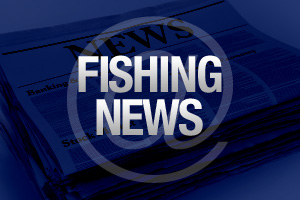Representatives of
Since the 1970s there has been a massive increase in the number of cormorants coming inland and serious damage to fish stocks and the bio-diversity of fresh water fisheries. Current estimates suggest there are some 23,000 birds over wintering in
Salmon Smolt Predation
On the Exe in Devon, cormorant predation has increased by 500 % over the past 15 years, and is the major factor in the huge decline of mid range eels, bullheads, lower river English (indigenous) brown trout (virtually now extinct on lower Exe) and at least 50% of salmon smolts are thought to be taken before they even reach the sea.
Concrete spill on Trews weir on lower Exe (constructed by EA) is where smolts congregate (they always seem to above an obstacle). Up to 70 cormorants predate smolts at this point, together with the other species mentioned.
Coarse Fish Examples
The Rivers Lea (flows into Thames east of the city) and Trent (Nottinghamshire up to the
An example of a coarse
Fisheries and Nature Conservation Minister, Ben Bradshaw has completed a review of the Wildlife and Countryside Act 1981 which implements the EU Birds Directive governing the circumstances under which birds can be culled. In answer to a Parliamentary question from Martin Salter MP, Mr Bradshaw announced the following measures to protect fish stocks whilst maintaining the conservation status of the cormorant as required by the Birds Directive:
– Licences will be issued for a period of two years, between 31 August and 15 April;
– There will be provision to extend to protect salmon and sea trout smolts or other vulnerable fish stock in designated spawning sites such as gravel shallows in rivers, licences to kill birds may be issued during the smolt run up to 1 May;
– Licences may be issued in advance to prevent problems occurring;
A new application requires a Defra assessor’s visit;
– All sites will be visited every two years;
– Licences can be amended by telephone, fax or email;
– All licence holders must provide annual returns on the actual number of cormorants taken – failure to do so will mean immediate revocation of the licence.
The numbers of cormorants that maybe shot under licence will increase from the current level of 600 a year. Mathematical modeling by the Central Science Laboratory suggests that the new procedures may permit up to 2000 cormorants annually to be culled with a possibility of up to 3000 annually in the short term without threatening the sustainability of the cormorant population.
These measures have followed several years of lobbying by angling and fisheries organisations on the issue, and a few recent weeks of intensive consultation between Defra and the Moran Committee Bird Group, represented by its Chairman, National Association of Fisheries and Angling Consultatives’ Terry Mansbridge, and the Salmon & Trout Association’s Paul Knight.
Terry Mansbridge said:-
“We welcome these changes of policy by Defra, which will significantly improve the ability of fishery managers to protect their fish stocks whilst not affecting the conservation status of the birds. Our thanks to the Minister and his department, and to Martin Salter MP for his efforts on our behalf.”
Paul Knight agreed:-
“We particularly welcome the added protection this will give vulnerable migrating salmon and sea trout smolts, together with spawning coarse fish and recently stocked fish in still waters.”
Speaking from the House of Commons on the day of the announcement newly elected President of the National Federation of Anglers, Terry Fell said:-
“What has been achieved today is proof positive of the advantages in working in co-operation with the government who clearly recognise the genuine concerns of Britain’s 3.5 million anglers, many of whom have watched their fisheries devastated by cormorants in recent years. Our good working relationship with government ministers such as Ben Bradshaw and Richard Caborn is in marked contrast to the disgraceful scenes of violence that we saw outside Parliament when the Hunting Bill was being debated on Wednesday.”
Reading West MP, Martin Salter who is also the government’s Parliamentary Spokesperson for Angling added:-
“






